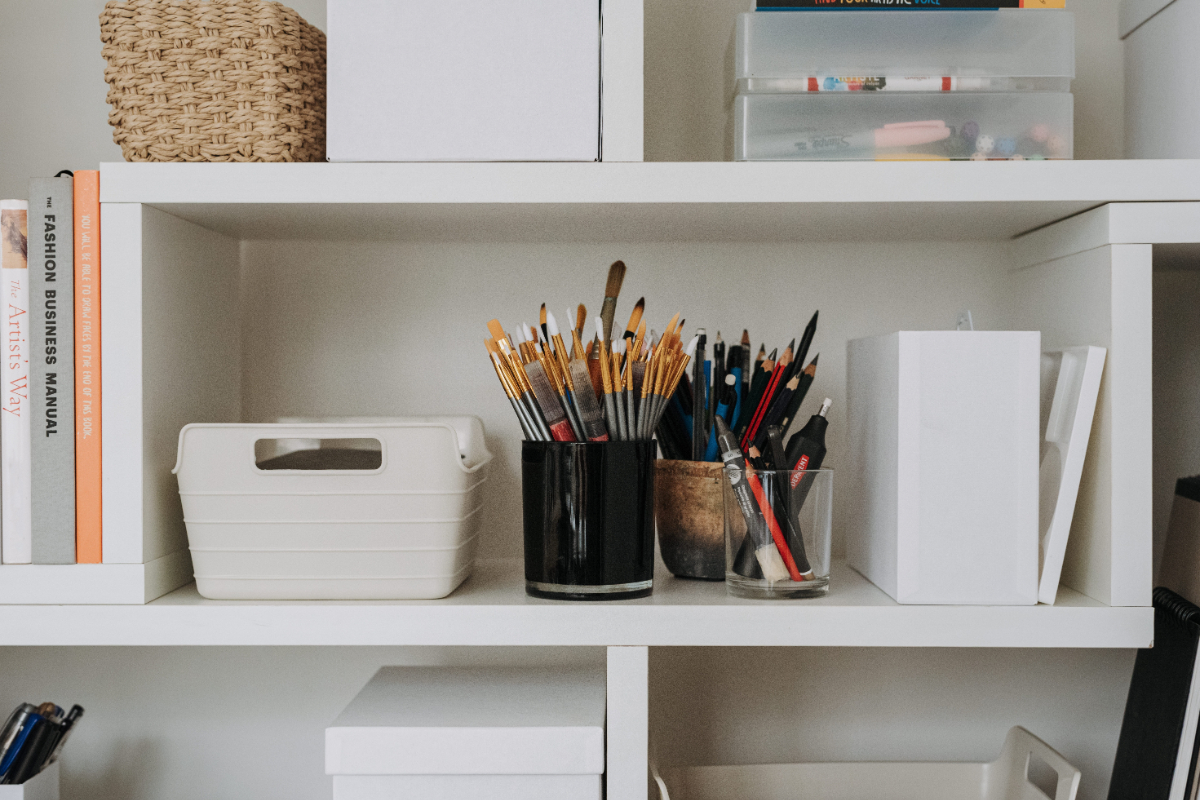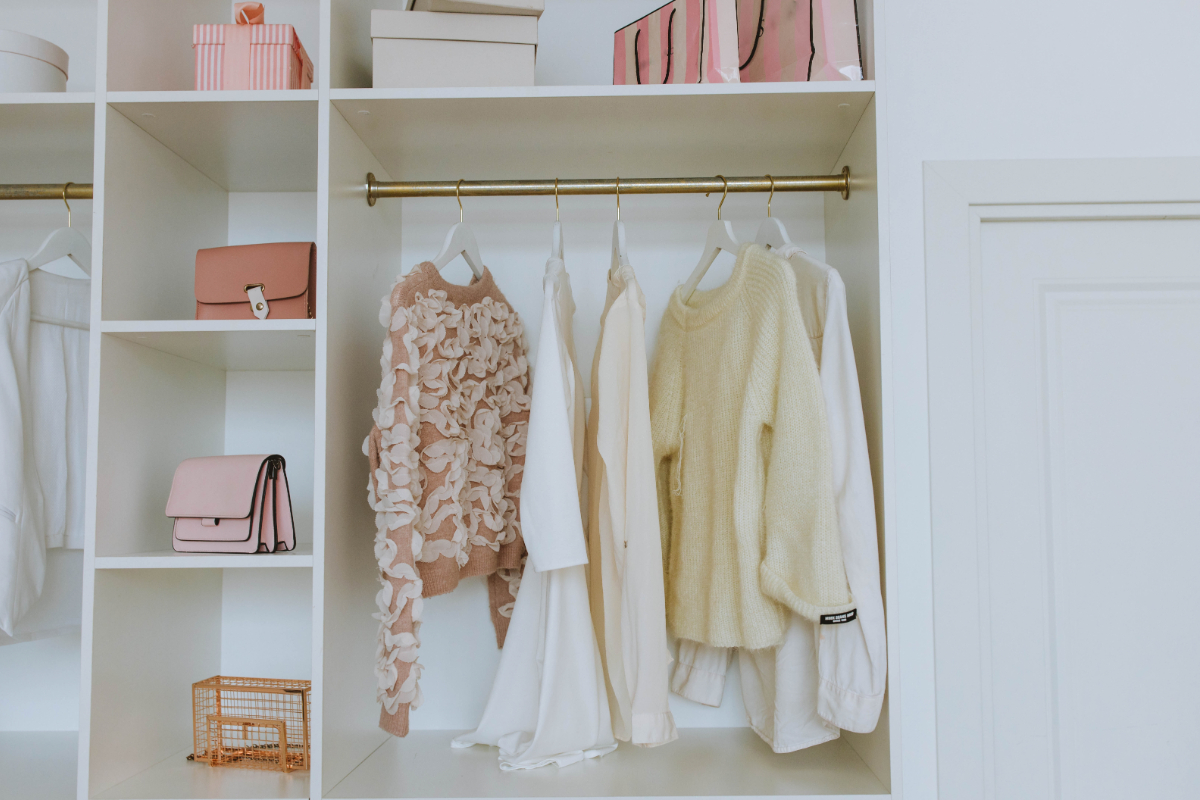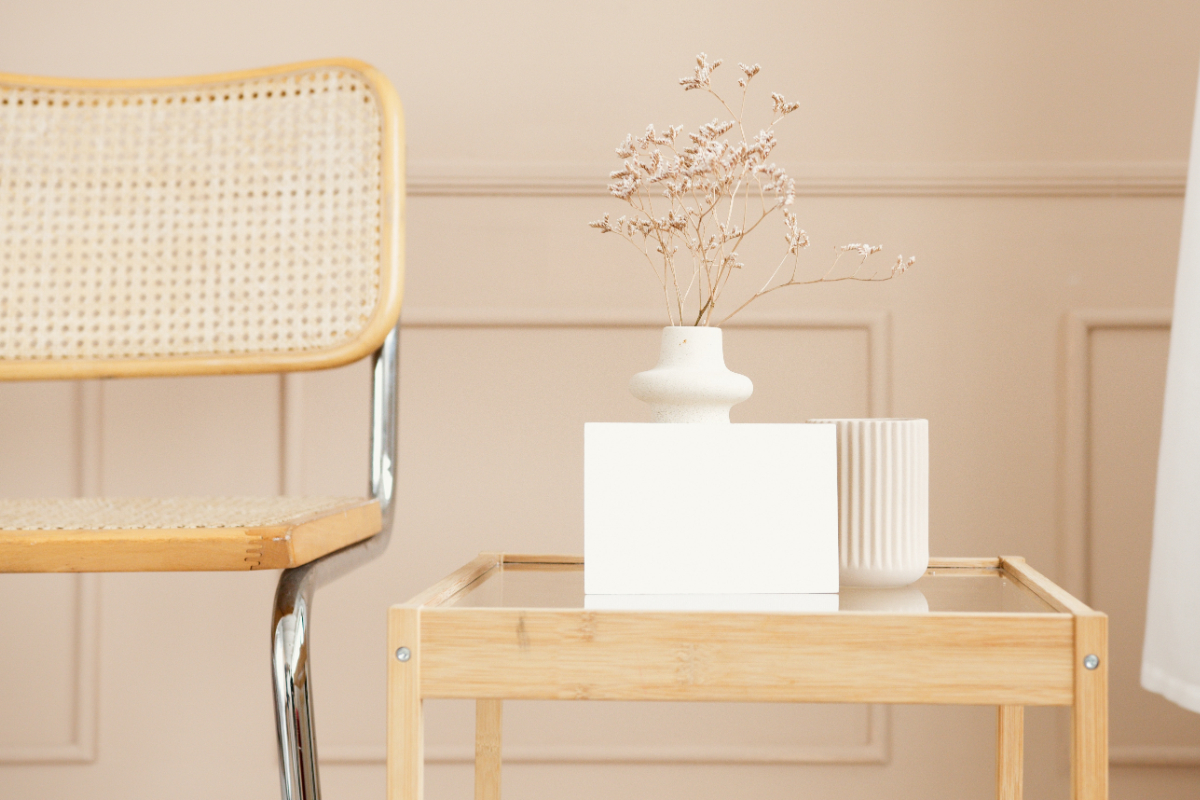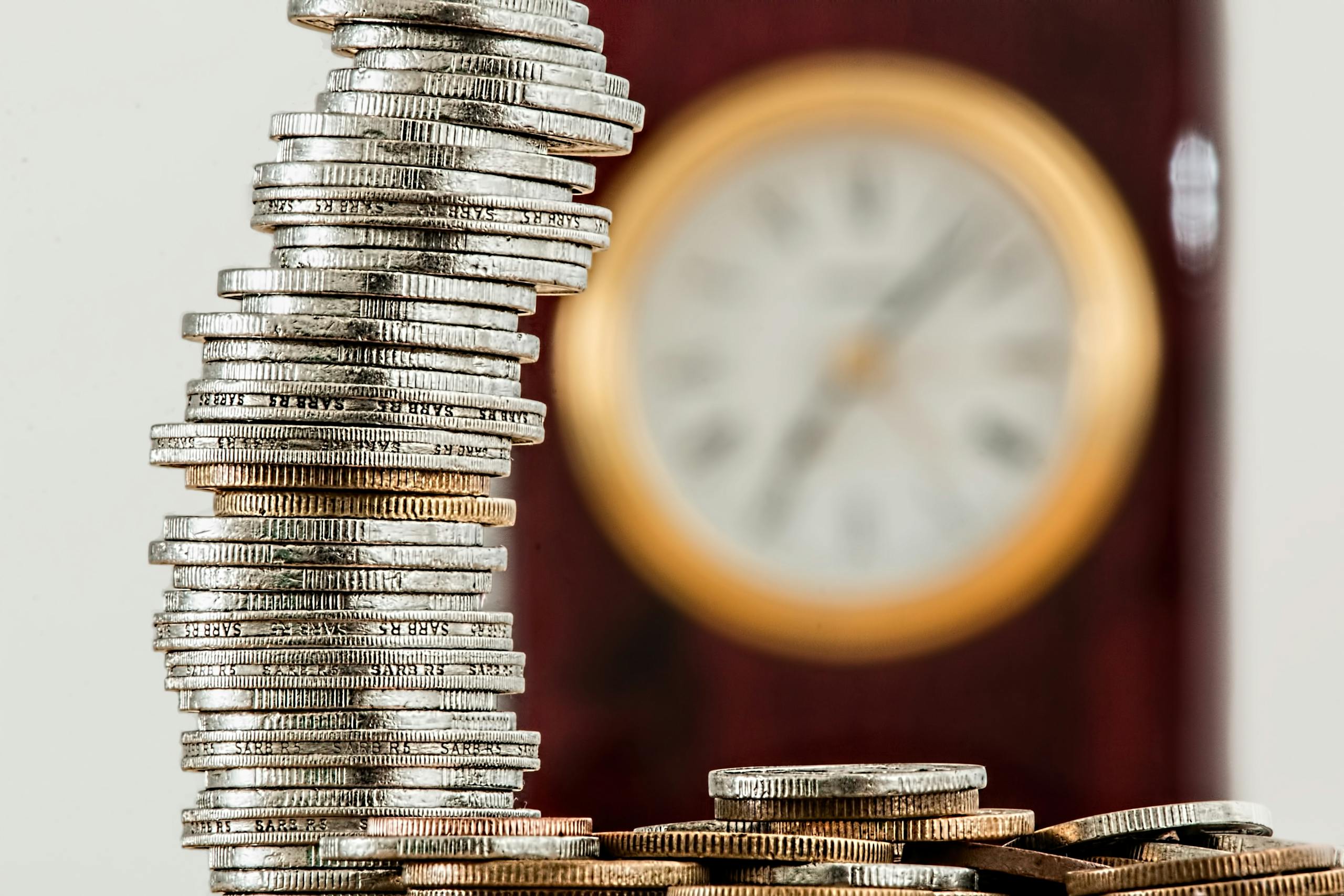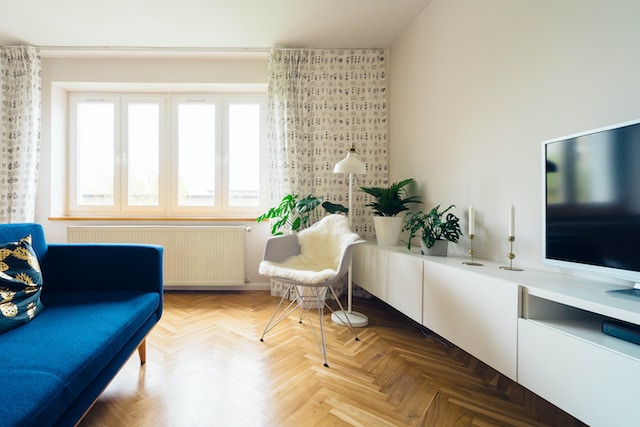Identify and Conquer Clutter Magnets in Your Life
There are some affiliate links below, but they are all products I highly recommend. For more info, view my disclosure here.
Are you feeling overwhelmed by the amount of clutter in your home? Do you feel like every time you clean, it seems to pile up again? You may have a few “clutter magnets” in your home that are causing the mess. Identifying these magnets, and what to do about them, is the key to keeping your home organized.
Clutter can accumulate quickly and can often seem impossible to get rid of. Clutter magnets are areas or items in our homes that attract mess and disorganization, preventing us from having an uncluttered space. From bookshelves to entryways, there are several places where clutter tends to accumulate.
In this article, we will discuss how to identify your clutter magnets and what steps you can take to prevent them from becoming a problem. We will look at specific strategies for dealing with each type of magnet, as well as some tips for creating an organized space that you’ll be proud of! So if you’re ready to tackle the mess and take back control of your home, read on!
What Is A Clutter Magnet?
A clutter magnet is a physical object, or an area of your home, that has become a magnet for accumulating clutter and mess. Many of us have these clutter magnets without even realizing it. These can be anything from a desk drawer to an entire room in our home. They are usually areas that we don’t use frequently, but still have a tendency to collect clutter and become disorganized over time.
The first step in identifying your clutter magnets is to take stock of the items you own and where they are located throughout your home. Once you know what items you have and where they are located, it will be easier to identify which spaces tend to attract more mess than others.
Once you have identified the areas in your home that are prone to accumulating clutter, it’s time to come up with solutions for how to reduce the amount of mess in these spaces. Some options include decluttering regularly, using storage containers or baskets, setting up designated areas for specific items like paperwork or toys, and giving away any items that you don’t need anymore. With some effort and creativity, it is possible to turn even the most cluttered space into an organized oasis!
Identifying Clutter Sources
When it comes to our homes, clutter can be a real problem. Identifying the sources of your clutter is the first step towards solving it. Let’s explore some common causes and how you can tackle them.
First up are ‘clutter magnets’, which are items that naturally accumulate and create mess. These could include things like remote controls, mail, books, or anything else that people tend to throw on surfaces and forget about. To combat these, you should find storage solutions for each type of item so that they have a designated spot. If you don’t have space for storage bins or boxes, look into creative ways to keep things off of surfaces.
Another source of clutter is emotional connections to items – often referred to as ‘sentimental clutter’. These items may bring back memories or hold special meaning in your life, but if they’re sitting out collecting dust they could contribute to a cluttered environment. Rather than simply getting rid of all sentimental items, try showing them off in an organized way – like displaying photos in frames or storing keepsakes in decorative boxes. You could also take photos of those items so that you can still appreciate them without taking up too much physical space.
When it comes down to it, knowing what’s causing your clutter is key to keeping it under control. With a little creativity and effort, you can easily identify and solve the sources of your mess – leaving your home looking neat and tidy!
Tips For Reducing Clutter
When it comes to reducing clutter, the key is to identify your ‘clutter magnets’. These are things that draw us in and make us accumulate unnecessary items in our homes and offices. Once we identify these sources of clutter, we can take steps to reduce them.
The first step is to analyze our living and working environments and determine what draws us in. Are there certain pieces of furniture or decorations that attract clutter? Maybe there are too many shelves or drawers that allow us to store items without needing them. Or perhaps we just like collecting things and don’t want to let go of them due to sentimental value.
Once we’ve identified our main sources of clutter, the next step is to take action. This means deciding which items can be donated, recycled, or reused, and then finding ways to store items more efficiently. It also involves setting limits on how many new things we bring into the home or office each month. With a few simple strategies, it’s possible to reduce the amount of clutter in our lives and create a more organized space for ourselves.
Home Organization Strategies
Organizing your home can seem like a daunting task. After all, it’s hard to know where to start. Fortunately, there are strategies you can use to get the job done quickly and efficiently. Let’s look at four of them now.
The first strategy is to identify your clutter magnets. This means figuring out the areas in your home that tend to accumulate the most mess and clutter over time. Once you’ve identified these problem spots, it’s much easier to take steps towards reducing the amount of clutter that builds up.
The second strategy is to create zones for different activities within each room or area of your home. For example, if you have an office space, create a specific spot for paperwork and filing that’s separate from where you do computer work or other tasks. This will help keep everything organized and make it easier for you to stay on top of things.
Finally, don’t forget about storage solutions! Investing in some simple storage solutions like containers, baskets, hooks or shelves can go a long way in keeping your space tidy and free from clutter. You don’t need anything fancy – just something practical that will help you keep track of where things are so they don’t end up scattered around the house.
These are just a few ideas for getting your home organized – with some effort and dedication, you’ll be able to make huge strides towards creating a more orderly environment for yourself and those around you!
Decluttering Your Closet
When it comes to getting your home in order, the closet is a great starting point. It’s one of the biggest ‘clutter magnets’ in any home since we often throw things inside without taking the time to organize them properly.
Decluttering your closet is an important part of any home organization strategy. The best way to start is by reducing the amount of items in your closet; if you haven’t worn or used an item recently, it’s probably time to let it go. You can donate, recycle or upcycle pieces that are still in good condition and get rid of anything that’s broken or stained beyond repair.
Organizing what remains can be done simply with bins, shelves and hangers – or you could opt for a more elaborate system if you have the budget and space. Whichever route you take, it’s important to keep like items together so everything has its place and is easy to find when needed. This will help ensure that your closet remains clutter-free!
Minimizing Kitchen Clutter
It’s time to focus on how to manage the excessive clutter in our kitchen. This can be a daunting task because of all the kitchen appliances, dishes, utensils, and food items that accumulate over time. So, let’s break it down into different sections and start tackling one area at a time.
First off, it’s important to get rid of those items that we no longer need or use. This could be anything from old appliances and tools to expired food items in the pantry or refrigerator. Anything that doesn’t bring us joy anymore should go. Donating these items is a great way to free up space and help out others in need at the same time.
The next step is about creating some systems for organizing what remains in our kitchen. This could be as simple as investing in storage containers for pantry items or using drawer organizers for silverware and other utensils. Having everything stored properly will make it easier to keep track of what we have, while also making it easier to access when needed.
By taking these steps, we can reduce the clutter in our kitchens and make sure that only the essential items remain. The key is to stay consistent with regular decluttering sessions and maintain an organized system for storing our kitchen supplies. Doing this will help us create an enjoyable cooking environment that feels more spacious and efficient than before!
Curbing Paper Clutter
Paper clutter is one of the most persistent and overwhelming sources of mess. From mail to school papers, magazines, and bills, it can often be difficult to keep up with. To help you make a dent in paper clutter it’s important to recognize your triggers, like leaving papers on the counter or forgetting to empty your mailbox.
One way to start curbing paper clutter is by creating a designated spot for it. Whether its a file folder, basket, or desk drawer; having an area specifically for papers will help keep them from piling up elsewhere. Additionally, create a filing system that works for you. This could be as simple as categorizing papers into folders labeled ‘bills’ ‘school’ ‘receipts’ etc.
Take time every week or two to sort through the stack of paper and decide what needs to be kept and what can be discarded. Be sure to shred any documents that may have personal information on them before throwing them away. Having a regular routine in place will help keep the paper clutter at bay and help you stay organized in the future.
Home Technology Clutter
Home technology clutter is a common problem for many households. Whether it’s outdated gadgets, wires and cables, or old devices that no longer work, it can be difficult to manage. A great way to keep up with the ever-changing world of technology while avoiding clutter is to remember the rule of three: if you have three or more of a certain type of device or gadget, it’s time to get rid of the oldest one.
When managing home technology clutter, consider what purpose each device serves. Do you need each one? If not, consider donating or recycling unused items. This helps minimize unnecessary gadgets and free up storage space. Additionally, think about investing in products that serve multiple purposes – such as a laptop that doubles as a tablet – rather than buying several single-purpose items.
Organizing cords and cables can also help reduce home technology clutter. Use zip ties or cord organizers to bundle together similar types of cords and label them so you know which ones are used for specific devices. This will make it easier to find what you need when needed and help keep your living area free from tangled wires and cables.
The Benefits Of Living Clutter-Free
Living a clutter-free life has its benefits. Not only does it save you time, but it also reduces stress levels and helps to increase productivity. By reducing the amount of clutter in our lives, we can focus on what’s most important and make more meaningful connections with the people around us.
One benefit of having less clutter is that you’ll have more time to devote to activities that bring joy and fulfillment into your life. When you don’t have things cluttering up your space, you can focus instead on tasks that add value to your day-to-day life. Whether it’s spending time with family or taking on a creative project, having fewer distractions makes it easier to stay focused and productive.
Living without clutter also helps reduce stress levels by eliminating the need for constant decision making. We often feel overwhelmed by too many choices and decisions presented to us when there is too much stuff around us. With a clutter-free home, decision fatigue is reduced and we can be more mindful about how we spend our energy throughout the day.
Having an uncluttered home isn’t just good for our mental health; it’s also good for our physical wellbeing as well. We are less likely to feel weighed down by physical items which can impact our posture, concentration, and overall mood. By removing clutter from our lives, we create an environment that fosters wellbeing, creativity, productivity and connection with those around us – all incredibly valuable elements of a happy life!
Staying Organized In The Future
Now that we’ve identified our clutter magnets, it’s time to think about how to stay organized in the future. This will involve a combination of strategies and self-discipline. Firstly, we should set limits for ourselves on what we allow in our homes. We should only bring in items that are truly necessary or which bring us joy; anything else should be donated or recycled.
Secondly, it’s important to have a system for dealing with incoming items – whether that’s mail, shopping bags, or something else – so they don’t end up cluttered around the home.
Finally, establishing routines for tidying and decluttering can help ensure our home stays organized and clutter-free over the long term. Regularly clearing away any unwanted items helps prevent them from building up and becoming overwhelming.
With these strategies in place and a commitment to keeping things organized, we can enjoy the benefits of living clutter-free!
